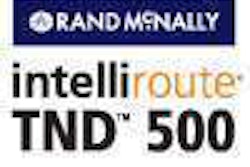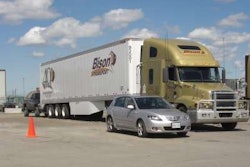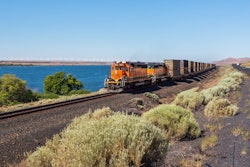On the one-year anniversary of the California ports’ Clean Trucks Programs, the Port of Los Angeles on Thursday, Oct. 1, was awarded nearly $2 million from the U.S. Environmental Protection Agency under its American Recovery and Reinvestment Act of 2009 National Clean Diesel Funding Assistance Program.
U.S. EPA Administrator Lisa P. Jackson announced the port award along with about $24.5 million in other Southern California “green” funding grants for diesel emissions reduction projects under ARRA. Los Angeles Mayor Antonio Villaraigosa and Port of Los Angeles Executive Director Geraldine Knatz were among the officials on hand for the announcement in Long Beach.
“These resources will further support innovation, emission reduction and job creation in Los Angeles, specifically at the port, where we’ve already demonstrated that initiatives to clean the air — like the historic Clean Truck Program — work,” Villaraigosa says. “We need to continue to take every opportunity to remove equipment reliant on dirty diesel. This funding will help Los Angeles further its role as a leader in sustainable, clean technology.”
The $1,991,750 in ARRA funding will be used by the Port of Los Angeles and its tenants to replace, repower or retrofit a total of 27 pieces of equipment currently in operation at the port, including trucks, forklifts, cranes and other cargo handling equipment. “As we mark the one-year anniversary of the successful Clean Truck Program, we’re grateful that the EPA is assisting us in our efforts to reduce port air pollution on other clean diesel fronts,” Knatz says. “These funds will help us repower and clean up some essential port equipment.”
The Port of Long Beach says its Clean Trucks Program is on track to nearly achieve its goal of an 80 percent reduction in diesel truck pollution, two years ahead of schedule. The port’s program started Oct. 1, 2008, with the aim of dramatically slashing by 2012 air pollution from the thousands of trucks that haul cargo containers to and from port shipping terminals. The centerpiece of the program is a progressive ban to phase out the oldest highest-polluting trucks in favor of trucks that meet tough 2007 federal emissions standards.
According to the port, thanks to an unexpectedly rapid turnover of vehicles as truck owners moved quickly to comply with looming deadlines, the program will prompt a near-complete conversion to cleaner trucks by the next “ban” deadline, Jan. 1, 2010. “The Clean Trucks Program, in just one year, has been extraordinarily successful in meeting its clean air goals,” says Long Beach Mayor Bob Foster. “I give a lot of credit to the port, the trucking industry, and importers and exporters for this achievement. It’s through their support that we are continuing to improve air quality and reducing health risks here in Long Beach and throughout the region.”
As of mid-September, nearly 5,000 clean trucks – big rigs that meet 2007 federal emissions standards or better – are moving more than half of the truck-hauled cargo at the Port of Long Beach. “In a few months, we’ll see nearly all the truck-hauled containers moved by clean trucks,” says Richard D. Steinke, Port of Long Beach executive director. “The trucking industry is to be commended for turning over its truck fleet so rapidly.”
Approved by the Board of Harbor Commissioners in 2007, the Clean Trucks Program established a phase-out of the older trucks along with a system to subsidize the cost of new vehicles for truck operators who required financial assistance. The program debuted Oct. 1, 2008, with a ban on 1988 and older trucks. On Jan. 1, 2010, 1993 and older trucks will be banned, as well as 1994 to 2003 trucks that are not retrofitted to reduce air pollution.
Last Feb. 19, the ports started charging a fee of $35 per 20-foot container for all cargo not hauled by “clean trucks.” The Port of Long Beach says the Clean Truck Fee proved to be a motivator for the industry to buy new trucks largely on its own. Other Clean Trucks facts, provided by the port:













